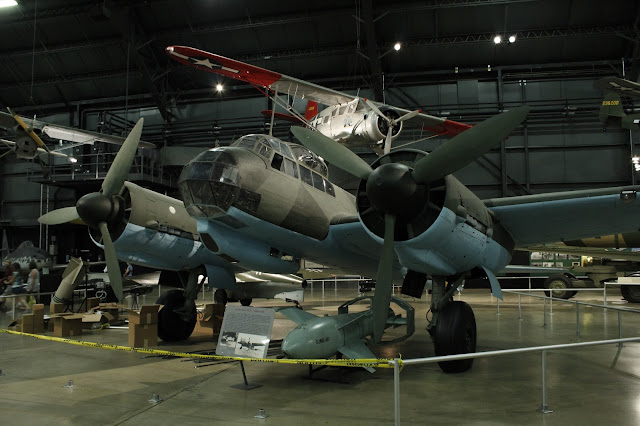With this blog always expanding as I find more things about
my hobbies to write about and share, I find that my photos of airplanes not in
flight need more of a base to stand on. Instead of just placing them on a piece
of neutral colored media, I came up with an idea to create a small easy to
transport “flight line” for my jet age models. I first had some questions to
answer myself before I came up with a plan of attach. The first area to cover
was what size to make this little display stand, I only work with 1/72 scale
aircraft; with that said, I had to for see what most aircraft space would take
up on a simple display stand. Mostly I am looking at a one foot by one foot
area of a foot print. Now, looking at the foot print of most landing gear area
I foresee it being less than that. My decision was to go with a six inch by
twelve inch plywood base and spot the aircraft at an angle to maximize the
available space. This is only a general guess for me, I can see that some “big”
planes won’t fit but I feel confident that this will work for most models I
plan to build in the next few years.
Construction starts with finding the center of the board and drilling a 1/4 inch hole for the blind nut, once in place, it is then glued in with CA glue for added durability.
The build begins with a quick shopping at my local hobby shop for a piece of model aircraft grade plywood. I like this stuff because of its balance of strength and lightness. I decided to go with a ¼ inch piece that is six by twelve inches, I like the sturdiness of this size and it is not too small. Next, I need a 1/4-20 blind nut to act as my mount for my tripod, which will be used to hold the base as I take photos of the aircraft.
Lastly, I need a sheet of Evergreen styrene of a thickness of .40 and a little over sized compared to my base. The rest of the supplies that I had on hand include, Prisma black color pencil, Tamiya deck tan, Tamiya gunmetal, Tamiya flat black spray, Tamiya grey primer, Plastruc diamond plate sheet, Durango Press HO scale manhole covers, Vallejo black wash, Testors Dullcote and Woodland Scenic yellow stripe dry transfers. |
| The styrene sheet (white) and diamond tread (tan) |
 |
| It all begins here with making the tripod mount |
 |
| The manhole covers are laid on the sheet for placement marking |
The opening for the diamond plate hatch is only an eye ball judgment and was around 1/2 inch by 1 inch. The plate was then cut and fitted into place onto the wood base and glued in with CA glue. The manhole covers were drilled and cut into place but I had to sand down the backs of the covers so they didn’t protrude too far above the plastic.
 |
| Openings for the manhole covers |
Next in the process is to pant the base to look like concrete. I chose Tamiya deck tan because of its look of aged concrete to represent a well-used flight line. The manhole covers were also painted during this time with Tamiya gunmetal. Once the paint was in place, it was allowed to dry for a couple days. As the days pasted, the project was continued with a smooth application of Testors Dulcoat to seal the paint for the next step. After a few minutes of drying, the next step was to draw in the simulated expansion lines into the concrete. This is achieved by making marks every two inches and made into two by two inch squares. I did this in angle to add visual interest and should be done with the aid of a metal straight edge to keep the lines straight and at the correct lengths.
 |
| After a quick spray of Tamiya primer, the Deck Tan color is applied to the diorama base |
 |
| Once the Deck Tan color is applied the covers were painted with Tamiya Gunmetal. |
Final few steps include, sealing the expansion lines again with Dullcote and then laying out the yellow guide line with Woodland Scenic dry transfers. The base is then sealed again with Dulcoat to protect the dry transfer. Next, a few “oil” spots are created with Vallejo black wash, and finally the whole base is sealed with Dullcote.
To give the
base a professional look, I sprayed the bottom and side of the base with Tamiya
Matt Black spray. The top of the base was covered up with masking tape and a
piece of a brown paper bag along with covering the blind nut opening to prevent
the thread from not working properly. A word of caution; be sure to take time
in masking up anything. The more time and care you take in masking off areas
the less time you spend repainting the areas you didn’t want paint landing on.
So there you have it, a nice photo diorama for my jet age airplanes for all to enjoy, this can be done in a weekend if you have an entire weekend free or in this case only a few spaced out days. Happy modeling everyone, TRWBM.













































